Bob Evans ….. Down On The Farm
The Early Days
byDeak Roberts
Bob Evans ….. Down On The Farm
The Early Days
byDeak Roberts
ROBERT L. "BOB" EVANS
GREENBRIER MILITARY SCHOOL (GMS)
CLASS OF 1937
Prologue by the Author
Bob Evans graduated from GMS in 1937 after completing his Junior and Senior years. He is possibly the most famous of all our Alumni and the epitome of an American success story. They say, “a man is known by the company he keeps”. Bob knew many people and had many friends. Some of them were famous like the late Colonel Harland Sanders of Kentucky Fried Chicken fame, the late Dave Thomas (the founder of Wendy’s), and the late Woody Hayes, the great Ohio State Football Coach and Historian. Bob also knew Governors and Congressmen and many other important people, but it was a lot of little people whose names were unknown who worked with Bob that helped him the most. Some of them were Bob’s life-long friends. His best friend was his wife, Jewel, and Bob would tell you “she was the best thing that ever happened to me”.
Bob came from hearty stock. The Welsh people were tough and they endured the hardships of crossing the mountains to settle in the West as “Ohio” was then known. They were self reliant and smart, and they contributed much to the building of America.
The article below only touches on the early life of Bob Evans. To cover his life adequately would take a book, and, fortunately, one exists. It is called A Bountiful Heart , written by Bob’s daughter, Robbin Evans Chamberlain, and, it was masterfully done. You can get a copy in any Bob Evans Restaurant Gift Shop for about $15.00. I did get a copy at Bob’s Restaurant #1 in southeastern Ohio and donated it to our Alumni Association archives. It is excellent reading and gives the reader insights into the man that came to and graduated from Greenbrier Military School all those years ago. A major contributor to that book was our own GMSAA Secretary , Herb Pearis. Herb filled Robbin in on a lot of information about GMS that she was not familiar with. One of Bob’s friends and classmates at GMS was Joe Lemon ‘37 who also added to the book. He recalled Bob did play ball, but the thing he was most proud of was that he made the GMS Rifle Team. Joe’s Nephew, our own George Lemon “57 had dinner with Bob at The Greenbrier Hotel many years after Bob had graduated and said Bob told him “coming to Greenbrier Military School was one of the greatest things that happened to him as a boy”. Bob also said that his Father, Stan, thought Bob needed to brush up on his social skills. Bob now wondered how rough-edged some of those boys coming to GMS must have been. Rules and Regulations for the Mess Hall included: “Knives shall not be used for carrying food to the mouth” and “Spitting is considered unthinkable in gentlemen”.
Like so many GMS Alumni, Bob Evans success started on the campus of GMS. Bob
knew that and sent his son, Robert Stephen Evans who also graduated from GMS in the Class of 1969. Stephen said of his Father, “He loved that school. It was a different generation, a different time. I caught the school on its decline. Two years after I left, it closed down.”
What Stephen was saying was that GMS was like any other Institution. It is only as good as the people who run it. When the Moore family bought the school in the early 1920s and turned it into a Military Academy run by almost everyone in the Moore family, the school became dedicated to the education and positive development of young men, and the school flourished and became likened to a well-oiled machine. When, eventually, the management parts of the machine failed due to age and death, and were never replaced, the machine stopped. Bob did come to love GMS as most of us did. His daughter, Robbin, the Author of A Bountiful Heart, the definitive book on Bob’s life, said “Dad was unimpressed at first. Dad simply learned to focus his energy and ideas and this made his Greenbrier experience a true turning point in his life. It was this type of discipline that most benefited my Father’s headstrong ways and single-mindedness.” Bob did well at GMS and it helped him from the time he graduated throughout the rest of his life. I hope you enjoy reading about Bob Evans as much as I enjoyed writing it. He was an extraordinary man.
Deak Roberts '56
Bob Evans ..….. Down On The Farm
The Early Days
Bob Evans (1918–2007)……… Innovator (better sausage), Restaurateur, Entrepreneur, Farmer, Business Owner, Corporate CEO, Husband, Father (of 6), Visionary, Hog Raiser, Corporate Director, Soldier, Educator, Philanthropist, Christian, and Graduate of Greenbrier Military School where he is today a member of the Greenbrier Military School Alumni Association (GMSAA) Hall of Fame.
Yes, Bob was all of the above and more, and his name is one of the best known this country has ever known. He is the dominant icon in the world of sausage and restaurants specializing in Breakfast. His steamboat Victorian style, red and white restaurants number around 570 and counting, plus Bob Evans Farms, Inc., owns Bob Evans Sausage Company, the Mimi’s Café chain of 144 restaurants, and the Owens Country Sausage Company in Texas. The corporation employs 49,000 people. Last year, the total Revenue of the corporation was $1.75 Billion. Not bad for a farm boy that didn’t graduate from college. Not that he didn’t have the opportunity or try, but shortly after enrolling at The Ohio State University in Columbus, Ohio, Bob developed severe migraine headaches that precluded doing any academic work and he had to leave Ohio State. He would return there later in life to work with the students in the University’s College of Food, Agriculture, and Environmental Sciences.
Bob was born to Elizabeth Lewis and Stanley Evans on May 30, 1918, in the flatlands of northeastern Ohio just south of Toledo off I-75, before you get to Bowling Green, in the little community of Sugar Ridge. Bob’s folks were grocery store people, and the big chains (Kroger, A&P, Piggy Wiggly, etc.) were starting to run the little guys out of business, so in 1924, the family moved to the little river town of Gallipolis on the Ohio River in southeastern Ohio. It was the county seat of Gallia (pronounced GAL-yuh) County where Bob would grow up on a farm in the gently rolling hills west of the river near Rio Grande.
Bob was the product of a proud Welsh heritage that came to America in 1840. Bob’s Welsh ancestors were a bold, self-reliant, and resourceful lot that made their way across the Allegheny Mountains and settled in the West (that is what Ohio was in those days….the West). The first settlement in Ohio was Marietta on the Ohio River near Parkersburg on the West Virginia side. Marietta was not far from West Virginia. The border was about 10 feet into the river from the Ohio side, because West Virginia actually owned the land beneath the river except for 10 feet off the Ohio Bank. The second settlement in Ohio was Gallipolis about 70 miles downstream and across the river from Point Pleasant, West Virginia, where in 1774, the Battle of Point Pleasant took place and a Colonel Andrew Lewis defeated the Algonquin Confederation of Mingo and Shawnee warriors lead by the famous Shawnee Chief Cornstalk.
“Hayseed” , as Bob was known to his friends in those days, was an enterprising sort early on in life. He and his friend, Forest Clark, would run down chickens that escaped from the farmer’s market and take them home, fatten them up, and sell them. They would do anything for a few coins. They had a thing going whereby they would sneak up in the church bell tower at night with burlap sacks and grab the unsuspecting pigeons roosting up there, then sell them to the restaurants as squab for a quarter each. Of course, Hayseed and Forest were not above parting with some of those quarters in the local pool hall. That was, of course, when they weren’t hunting. They knew the woods well, and well they should, cause they spent enough time there.
Bob, although very smart, wasn’t what you would call an academic whiz. His interpretation of Attendance Rules and his tepid interest in scholastic endeavors precluded any significant academic achievement. Bob used to joke that “he was so smart they elected him President of the Freshman Class twice in a row’”. That was not true, but it was during his Sophomore year that Bob learned how to spell “Greenbrier”. His father had heard of Greenbrier Military School (GMS), the “School of Achievement” and decided a change of scenery would be helpful to Bob.
Bob was not too keen on the idea of leaving his rather comfortable existence and going into a no-nonsense, spit and polish, military school with Army ROTC, but he must have been approached by Maj. B. S. Bob Keene or his predecessor because young Bob was promised he could play football (his home high school had written him off as too much of a lightweight) and bring his dog to school. He was the only Cadet in the history of GMS to bring a dog to school. With those assurances, Bob was headed for Lewisburg for his Junior Year.
Stan Evans liked the idea that GMS had been providing young men with a quality education, discipline, social skills, religious instruction, and leadership skills for decades, since 1812, and that going to GMS could serve young Bob well in the future. Bob very quickly became acquainted with “The Beat”, and the Merit/Demerit System for insuring discipline. Every demerit meant a half-hour around the famous flagpole on weekends when everybody else went to town to see a movie or meet the Greenbrier College for Women (GCW) girls. Bob was said to be wearing his own personal rut in the walkway around the flagpole, but he quickly learned that making it from reveille to taps without getting demerits would earn merits to offset the demerits.
Father Stan had great sympathy for Bob having to spend time on “The Beat”, but he was thrilled that Bob was now making excellent Grades in most of his subjects. Bob was now not only playing football, baseball, and basketball as well, but the thing he was most proud of was making the Rifle Team. At last, all of Bob’s energy was being focused in the right direction and it was the “turning point” in his life. Little did he know then that he would go on to do great things and have his portrait on the wall of the GMSAA Hall of Fame.
After graduating from GMS in 1937, Bob returned to Gallia County where he became reacquainted with his future wife, Jewell Waters, a beauty from rural North Carolina whose Father came to Ohio as a site supervisor for dam construction for rivers and lakes. It was a fact that other than Lake Erie, there were no natural lakes in Ohio. All were man-made. Jewell had only known Bob for a year before he left for GMS and had not seen him since. She remembered him as being a bit mischievous and a bit undisciplined, and that he made several trips to the Principal’s office. She said, “He was a bad boy, played hooky, and went fishing.” He was none of that now, and they started dating. He would take her to the movies and the local hangout down on the corner called the “Bon Ton” for cokes and sandwiches.
Bob tried going to Ohio State. He wanted to be a Veterinarian, but, as noted above, the migraines ended that in his second year. Bob and Jewell decided to elope and get married, so using a Greenbrier Reunion as a cover, they eloped on the first day of June 1940. Bob said going to GMS and marrying Jewel were probably the greatest things that ever happened to him as a young man.
His first real job was when he took a job with the family owned Evans Packing Company and went on the road selling meat to grocery stores. He proved to be a good salesman who had good people skills. One night he came home with a calf in the back of the car. He said they could keep this calf for eight weeks, then veal it, and make a lot more money than he paid for it. From that experience, he figured he could raise hogs and make some money.
Bob got him a 27-acre spread outside Gallipolis but had to give it up. The war that had passed him up in the early years caught up with him at last and in 1944, Bob was in the Army guarding German, Italian, and Japanese prisoners up in Massachusetts till the war ended. Bob had had it with military life after two years of GMS and his stint in the Army. He was elated to return to Gallia County where he bought the farm that became known as “The Homestead”. To pay for it, Bob opened a restaurant called the “Steak House” and put two sausage plants in production. He never varied from making the best sausage in America, using the good hams and tenderloins instead of just scraps. He effectively used all parts of the hog, and the good sausage had everything in it but the squeal.
Bob was successful, in part, due to his uncanny ability to get good people to work with him. He was a Golden Rule abider, and a Christian who trusted people until they gave him reason not to. He became friends with Colonel Harland Sanders and with nothing more than a handshake was soon selling Kentucky Fried Chicken in his Steak House Restaurant. The Colonel knew a lot about Franchising, and Bob learned a lot from the Colonel, and he figured this knowledge might come in handy someday.
Probably the thing that made Bob more successful than anything else was his attention to detail in making a quality product. Bob’s sausage was meticulously made using only the quality hams and tenderloins with the right blend of spices. Attention to detail was something he took away from GMS where he had to be meticulous in his appearance and the appearance of his quarters for his inspections on the Parade Field and in his room respectively, his marching (precise lines and cover to the front), his classroom behavior, and even taking his meals. He had to march into the mess hall and stand at Attention until the Commander gave the command “Seats”. It was no wonder he could get 69 cents a pound for sausage in a grocery store whereas other brands were selling three pounds for a dollar. Nobody ever bought that stuff once they got a bite of Bob’s sausage. Bob was all about quality and it paid off.
The 1960s were tumultuous times with riots in the cities, assassinations of King, Jack and Bobby Kennedy, and the unpopular war in Viet Nam. College campuses were aflame with outrage against The Establishment, and Bob figured the American people wanted to return to a simpler time and a down-home kind of place where they could relax and enjoy some good down home cooking. Bob slipped into his cowboy boots and big white Stetson and started the Bob Evans Restaurant chain with his wife by offering the public a breakfast of eggs, sausage, country ham or city ham, made from scratch biscuits, hash browns, pancakes, waffles, and chicken with noodles. The only good thing he didn’t have was “grits”, but, of course, he was a Yankee. Bob started building a chain of restaurants, but the early expansion of the chain was a controlled expansion. Bob would take risks, but they were calculated risks. If Denny’s or Shoney’s had a good business going, Bob would put a restaurant in right across the street. Bob sure liked to do things right. In fact, his favorite slogan became “We do it right, or we don’t do it.”.
The rest is pretty much history. As noted above, there are now about 570 corporate owned Bob Evans Restaurants and growing (no franchises, so he didn’t need all that know-how from the Colonel after all). Bob’s early days set the tone for the rest of his life, and Greenbrier Military School played a very large role in helping Bob get a great start.
Let’s end this by all singing the jingle. You know the one. You’ve heard it a thousand times. Music Maestro, please. All together now:
"BOB EVANS...... ..ON.. ..FARM" ..DOWN.. ..THE..


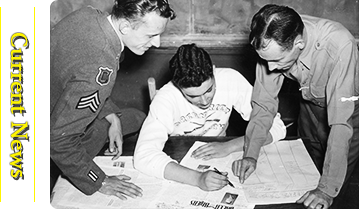
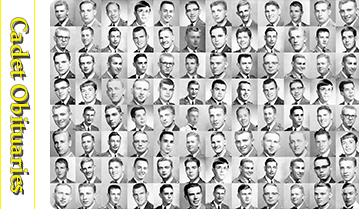

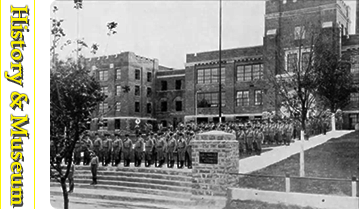



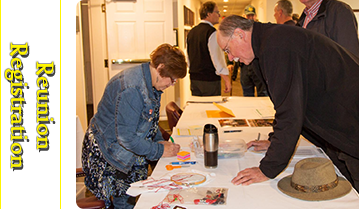
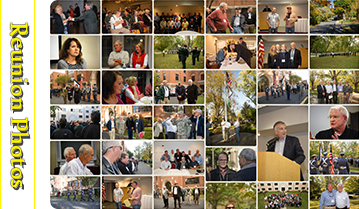

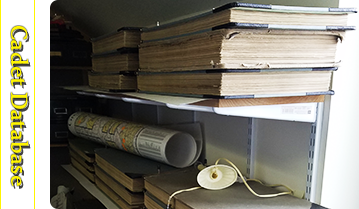
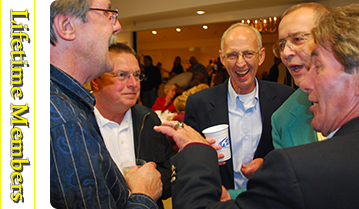
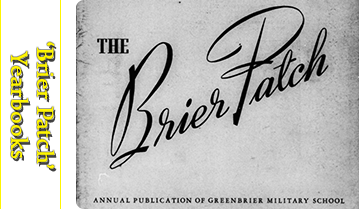



Comments
Remembering Bob at The Greenbrier
I can still see Bob in his bib overalls, his white shirt and tie during Homecoming during the time they were held at THE GREENBRIER Hotel. Bob was both a gentleman but also funny. I, myself often wear bibs while working and not always but upon occasion, I still think of Bob and every time I eat at a BE restaurant, I tell the story of knowing the recall Bob Evans. One fine man,